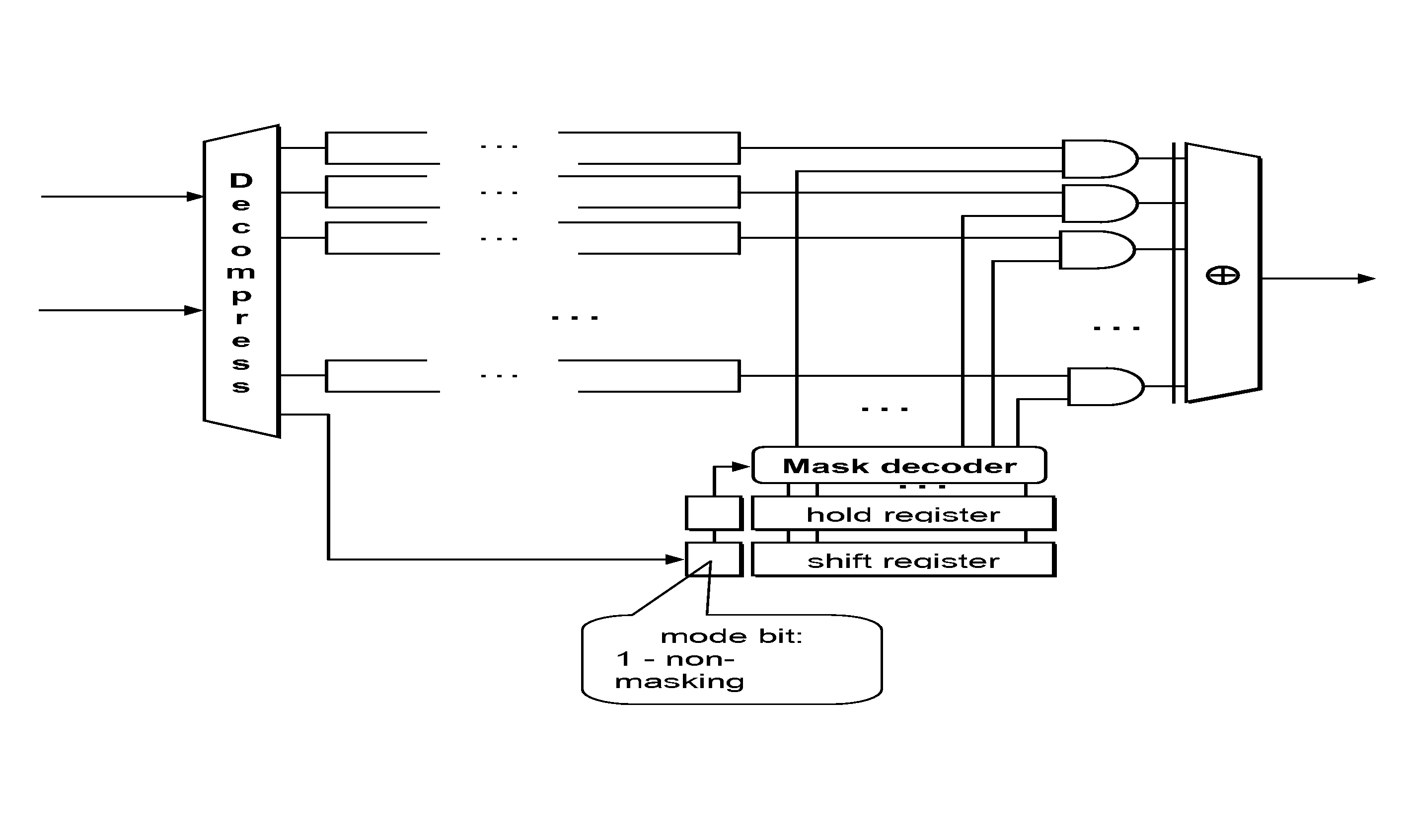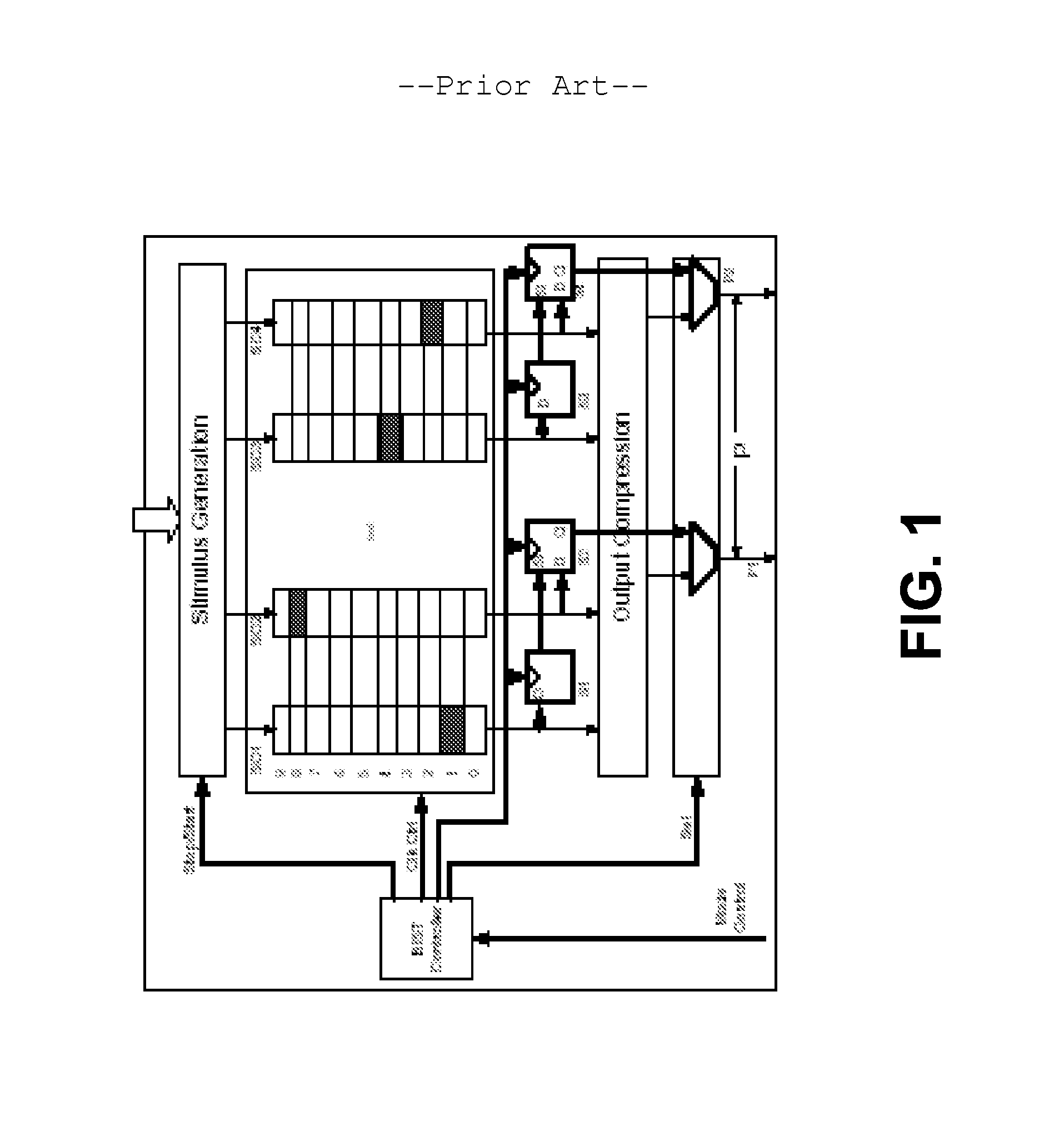Accurately identifying failing scan bits in compression environments
a technology of compression environment and scan bits, applied in the direction of electronic circuit testing, measurement devices, instruments, etc., can solve the problems of less than 50% success rate of first silicon, information loss, and more hardware and output pins, so as to achieve a wider array of compression designs and less hardware
- Summary
- Abstract
- Description
- Claims
- Application Information
AI Technical Summary
Benefits of technology
Problems solved by technology
Method used
Image
Examples
Embodiment Construction
Introduction
[0018]Disclosed below are representative embodiments of circuit testing techniques and associated apparatus that should not be construed as limiting in any way. Instead, the present disclosure is directed toward all novel and nonobvious features and aspects of the various disclosed methods, apparatus, and equivalents thereof, alone and in various combinations and subcombinations with one another. The disclosed technology is not limited to any specific aspect or feature, or combination thereof, nor do the disclosed methods and apparatus require that any one or more specific advantages be present or problems be solved.
[0019]As used in this application, the singular forms “a,”“an” and “the” include the plural forms unless the context clearly dictates otherwise. Additionally, the term “includes” means “comprises.”
[0020]Although the operations of some of the disclosed methods and apparatus are described in a particular, sequential order for convenient presentation, it should ...
PUM
 Login to View More
Login to View More Abstract
Description
Claims
Application Information
 Login to View More
Login to View More - R&D
- Intellectual Property
- Life Sciences
- Materials
- Tech Scout
- Unparalleled Data Quality
- Higher Quality Content
- 60% Fewer Hallucinations
Browse by: Latest US Patents, China's latest patents, Technical Efficacy Thesaurus, Application Domain, Technology Topic, Popular Technical Reports.
© 2025 PatSnap. All rights reserved.Legal|Privacy policy|Modern Slavery Act Transparency Statement|Sitemap|About US| Contact US: help@patsnap.com



